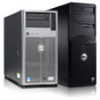Dell PowerEdge XL 5133-4 Dell PowerEdge FTOS Command Line Reference Guide for - Page 9
Before You Start, Default Settings, Other Auto-Con d Settings
 |
View all Dell PowerEdge XL 5133-4 manuals
Add to My Manuals
Save this manual to your list of manuals |
Page 9 highlights
2 Before You Start By following the instructions in the Dell PowerEdge M I/O Aggregator Getting Started Guide that is shipped with the product, you install the Aggregator in a Dell PowerEdge M1000e Enclosure. The Aggregator installs with zero-touch configuration. After you power it on, an Aggregator boots up with default settings and auto-configures with software features enabled. This chapter describes the default settings and software features that are automatically configured at startup. Use the tasks described in the other chapters to reconfigure the Aggregator for customized network operation. Default Settings The I/O Aggregator provides zero-touch configuration with the following default configuration settings: • Default user name (root) • Password (calvin) • VLAN (vlan1) and IP address for in-band management (DHCP-assigned) • IP address for out-of-band (OOB) management (DHCP-assigned) • Read-only SNMP community name (public) • Broadcast storm control (enabled) • Unregistered Multicast Packets flooding (enabled) • IGMP snooping in all VLANs except the default VLAN (enabled) • VLAN configuration (all ports belong to all VLANs) You can change any of these default settings using the CLI. Refer to the appropriate chapter for details. Note: You can also change many of the default settings using the chassis management controller (CMC) interface. For information about how to access the CMC to configure an Aggregator, refer to the Dell PowerEdge M1000e Enclosure Hardware Owner's Manual or Dell Chassis Management Controller (CMC) User's Guide on the Dell Support website at http://support.dell.com/support/edocs/systems/pem/en/index.htm. Other Auto-Configured Settings After the Aggregator powers on, it auto-configures and is operational with software features enabled, including: • VLANs: All ports are configured as members of all (4094) VLANs. All VLANs are up and can send or receive layer 2 traffic. For more information, refer to VLANs. • Data Center Bridging Capability Exchange Protocol (DCBX) Before You Start | 7















